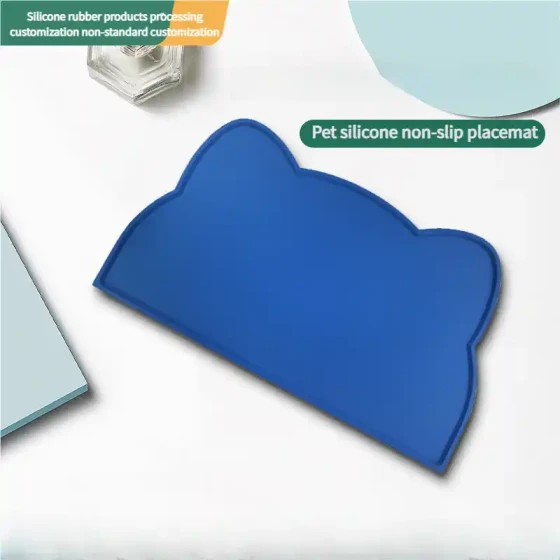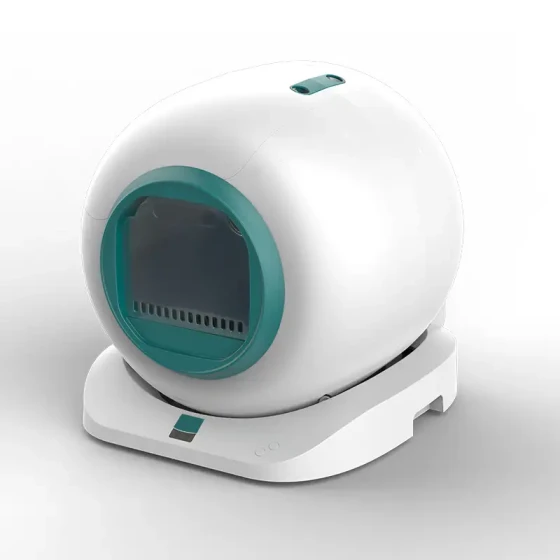What to do if there are fleas on the cat_A practical guide to completely remove fleas
Fleas on cats are a headache for many pet owners. Not only do cats suffer unbearable itching, but the home can also become "infested." To completely eliminate fleas, a combination approach is needed, including treating the cat itself and thoroughly cleaning the environment. Don’t worry, with the right methods, you can definitely drive these "jumping champions" out of your home and give your cat and family a peaceful and comfortable life!
The key to completely removing fleas from cats lies in interrupting the flea lifecycle and addressing both the cat and living environment simultaneously. This is like fighting a "war of attrition," requiring patience and proper methods.
How to tell if a cat has fleas?

Sometimes, you may just notice your cat scratching, licking, or biting its body more frequently than usual, especially around the base of the tail, inner rear legs, and neck. These could be "signals" of fleas. So, how can you be sure?
- Look for "flea dirt": Fleas feed on the cat’s blood and excrete digested blood that looks like black pepper granules. You can use a fine-toothed comb to groom the cat, especially over white tissue or a damp cloth. If the black granules turn red or reddish-brown when moistened, it’s basically confirmed to be flea feces.
- Directly find fleas: Fleas are small, wingless insects ranging from reddish-brown to black, about 1-3 millimeters in length. They move very fast, so you may need to carefully part the cat’s fur while paying special attention to sparse fur areas such as the belly and groin.
- Skin symptoms: Flea bites cause redness, small bumps, scabs, dandruff, and may even lead to hair loss and skin damage due to excessive scratching. Some cats may be allergic to flea saliva, causing flea allergic dermatitis, with more severe symptoms such as intense itching, large areas of hair loss, and skin thickening.
- Other signs: Severe flea infestations, especially in kittens, can lead to anemia, showing as pale gums and lethargy.
Practical methods to completely remove fleas
Completely removing fleas is like a "people's war," requiring joint efforts on the cat and the environment. Simply treating fleas on the cat is like dealing with "the tip of the iceberg," since many flea eggs, larvae, and pupae hide in the environment. The flea lifecycle includes egg, larva, pupa, and adult stages, lasting from two weeks to several months or longer depending on environmental conditions.
Step 1: Treat fleas on the cat
This is the most direct step, aiming to kill adult fleas on the cat.
- Use vet-recommended antiparasitic drugs: This is the most effective and recommended method. There are various cat-specific internal and external or external-only flea treatments on the market, in forms like spot-on treatments, sprays, tablets, etc. Spot-ons are usually convenient, applied on the cat’s neck or other areas they cannot lick. When choosing, pay attention to the active ingredients, applicable age and weight, and strictly follow instructions. Consult a vet to choose the product best suited for your cat for guaranteed efficacy.
- Medicated baths: Use specialized flea shampoo to bathe your cat, which can immediately kill adult fleas on the cat. Bathing should start from the neck to prevent fleas from escaping to the head. However, medicated baths have limited effect on flea eggs and larvae and should be combined with other methods.
- Flea comb: Use a fine-toothed flea comb to carefully comb through the cat’s fur, removing fleas and flea dirt. Collected fleas should be immediately placed in soapy water to kill them, avoiding crushing fleas that may scatter eggs.
Step 2: Thoroughly clean and treat the environment
The fleas in the environment are the truly troublesome enemies, hiding in carpets, floor cracks, furniture, pet beds, and other places.
- Vacuum cleaning: Use a vacuum cleaner to thoroughly clean every corner of your home, especially areas where the cat frequently roams, carpets, sofas, beds, and floor crevices. Vacuuming removes flea eggs, larvae, and some adults. After vacuuming, immediately seal the vacuum bag and dispose of it outside to prevent fleas from escaping back. It is recommended to vacuum continuously for at least two weeks to remove newly hatched fleas.
- High-temperature washing: Wash your cat’s bedding, toys, blankets, as well as household linens and sofa covers with water above 60°C and dry them thoroughly. This effectively kills fleas at all stages.
- Use environmental insecticides: Spray insecticides containing insect growth regulators (IGRs) and adulticidal components inside the home to break the flea lifecycle and prevent larvae from developing into adults. Carefully read instructions to ensure safety for pets and family and ensure good ventilation. Pay special attention to dark and damp areas where fleas may hide.
- Keep the environment dry: Fleas prefer humid environments. Maintaining good indoor air circulation and using a dehumidifier to keep humidity below 50% helps suppress flea reproduction.
- Natural methods: Some natural methods, like diluted lemon juice, mint, citronella essential oils, are said to repel fleas but may have limited efficacy and are better as supplements. Placing shallow dishes with soapy water can trap fleas by surface tension.
Step 3: Prevent reinfestation
One-time removal does not mean forever solved. “Wildfires never truly burn out; spring winds bring new growth” is not just a saying. To prevent fleas from coming back, regular prevention is essential.
- Regular deworming: Follow vet or product recommendations to regularly use flea treatments on your cat, even if no fleas are seen. This effectively kills fleas possibly parasitizing your cat and stops reproduction.
- Maintain clean living environment: Regular vacuuming, cleaning cat supplies and household textiles, and keeping indoor air dry and ventilated deny fleas a comfortable living environment.
- Control outdoor environment: If your cat goes outdoors, trim the lawn and weeds, clear junk in the yard to reduce flea hiding places.
Frequently Asked Questions
- Will cat fleas jump onto humans? Cat fleas mainly live on cats, but if there are many fleas on the cat or in the environment, they may bite people causing itching and discomfort.
- What ointment to apply after flea bites? Flea bites may cause redness and itching. Calamine lotion or over-the-counter hydrocortisone-containing creams can relieve symptoms. If severe or infected, seek medical care promptly.
- How to know if you have fleas on your body? If you find clusters of intensely itchy small red dots, especially on exposed areas like ankles and lower legs, and you have pets showing itching symptoms, it is very likely flea bites.
- How to treat flea allergic dermatitis in cats? If your cat shows flea allergic dermatitis symptoms, first thoroughly remove fleas. Vets may prescribe medications (such as corticosteroids) to control itching and inflammation and treat secondary skin infections.
Removing fleas on cats requires patience and perseverance. Success comes from treating both the cat and environment. Remember, prevention is always better than cure. Regular flea treatments and keeping the environment clean are the best strategies to stay free from flea troubles.





